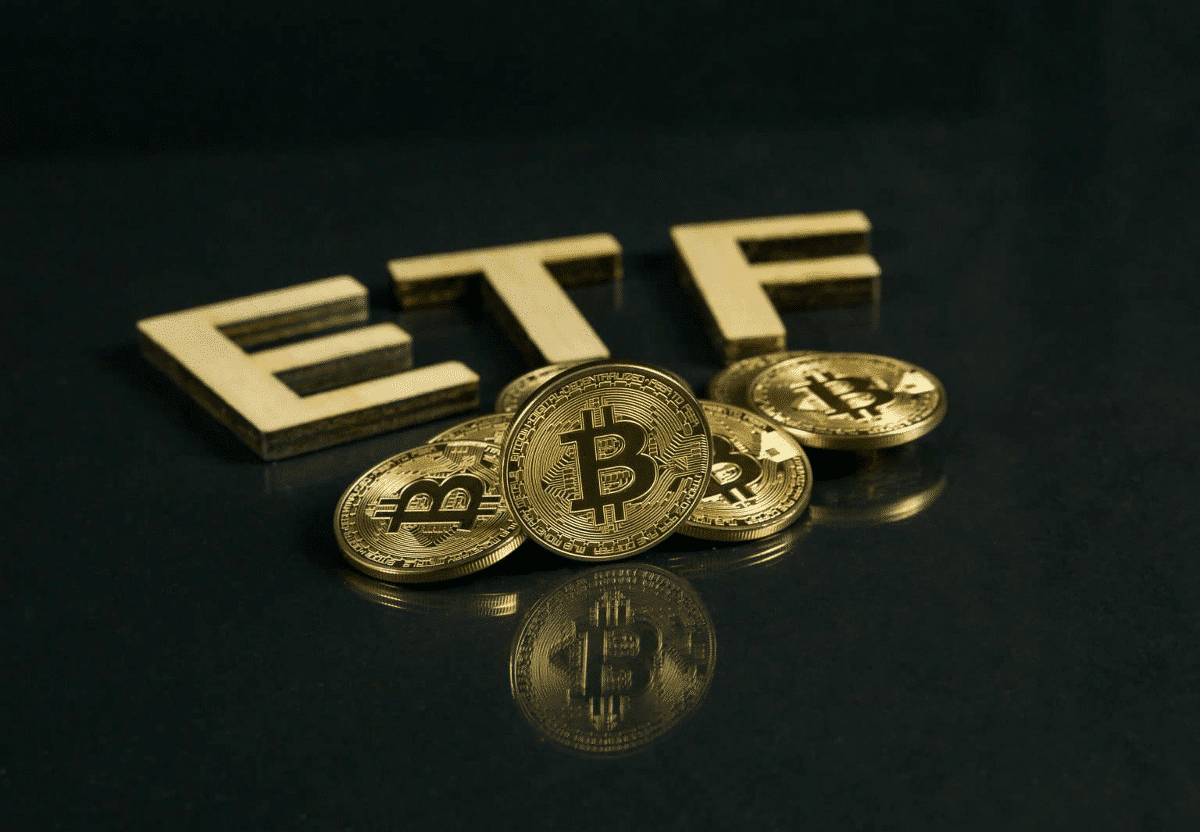The current status of DeFi applications on Bitcoin Cross-chain, Layer 2, new protocols, and native solutions.
The Latest Trends of DeFi Applications Exploring Bitcoin Cross-Chain, Layer 2, Novel Protocols, and Native Solutions
Author: Jiang Haibo, LianGuaiNews
With the launch of the Ordinals protocol and the creation of the BRC-20 token standard, there have been significant changes in the dynamics of the Bitcoin network. These innovations have led to a continuous high level of unconfirmed transactions in the Bitcoin mempool, increasing the demand for block space and boosting miners’ income. This year, Bitcoin’s hashrate has grown by over 80%, and these fundamental improvements may be the main reason why Bitcoin has outperformed other cryptocurrencies in the narrative leading up to the launch of spot ETFs.
Due to the rise of BRC-20 assets and the excellent performance of BTC price, the Bitcoin ecosystem has received more attention, with projects like ORDI, RUNE, etc. performing well in this cycle. In the following sections, LianGuaiNews will categorize and discuss DeFi projects in the Bitcoin ecosystem, with data as of November 14th.
- After the surge of Solana, where is the next sector rotation opportunity?
- Exclusive Interview with Base After creating the popular app friend.tech, what other areas will be targeted in the future?
- IRS’s Unconstitutional Broker Rule: A Crypto Catastrophe
Cross-chain or Ethereum-based DeFi projects
As the primary cryptocurrency, Bitcoin has a market cap of around 50%, and introducing Bitcoin’s security to other chains (mainly Ethereum) has always been a research focus for DeFi projects. The most prominent BTC-pegged token is still WBTC, but the underlying BTC is custody centralized by BitGo. In the decentralized field, BTC-pegged tokens are typically minted on Ethereum through cross-chain and synthetic assets. Major decentralized BTC-pegged tokens include tBTC issued by Threshold, renBTC issued by Ren Protocol, sBTC by Synthetix, etc.
tBTC is introduced to Ethereum and other networks through Threshold’s decentralized cross-chain bridge. The official website of Threshold shows that the current circulating supply is 1662.9 tBTC, making it the primary decentralized BTC-pegged token at the moment. Curve is the main platform for tBTC, and the stablecoin crvUSD supports tBTC as collateral.
The Ren Protocol team was previously acquired by Alameda Research, and due to the latter’s bankruptcy, Ren is currently in a transition period from Ren 1.0 to Ren 2.0, with 304.5 RenBTC issued on Ethereum.
sBTC by Synthetix was also one of the main decentralized BTC-pegged tokens, but its development has not received much attention due to stablecoin sUSD being the more important synthetic asset in the Synthetix ecosystem. Currently, there are 391.5 sBTC issued on Ethereum, with additional issuance on Optimism.
BadgerDAO, which focuses on bringing Bitcoin into DeFi, has also performed well recently. It provides automated staking services, allowing users to deposit WBTC and earn rewards. Additionally, BadgerDAO has a decentralized stablecoin called DIGG, which is pegged to the price of Bitcoin. With the development of Ethereum liquidity staking, BadgerDAO plans to launch a synthetic Bitcoin eBTC backed by stETH as collateral.
According to CoinGecko data, the native tokens of Threshold, Ren, Synthetix, and Badger have seen increases of 4.5%, -7.5%, 3.3%, and 34.9% respectively in the past 7 days.

Bitcoin Sidechain or Layer 2 DeFi Projects
Bitcoin does not support full smart contract functionality like Ethereum. Instead, it only supports a limited scripting language. However, it can use sidechain or Layer 2 solutions such as Lightning Network, Rootstock (RSK), Stacks, Liquid, MintLayer, RGB, etc., to enable DeFi operations within the Bitcoin ecosystem. These projects leverage Bitcoin’s security while attempting to improve transaction speed and reduce costs.
Among these Layer 2 or sidechain projects, Stacks has the highest market capitalization. According to DefiLlama data, the total value locked (TVL) in Stacks is currently 19.14 million USD. Among the DeFi projects on Stacks, the decentralized exchange ALEX has the highest TVL, at 13.33 million USD, with an increase of 69.85% in the past month.

RSK is a sidechain of Bitcoin that ensures network security through the combined work of Bitcoin miners and RSK miners using a proof-of-work (PoW) system. It achieves two-way pegging between Bitcoin and RSK.
Sovryn is a Bitcoin DeFi platform on RSK that provides a comprehensive range of DeFi services, including the stablecoin DLLR, Sovryn AMM for trading, lending pools, and margin trading. DefiLlama shows that Sovryn’s TVL is currently 27.23 million USD. Money On Chain has the stablecoin DoC, which is backed by Bitcoin RBTC on RSK, as well as a secondary investment token called BPro, which allows users to exchange RBTC for an equivalent amount of DOC. At present, the circulation of DoC is 3.69 million.

The Bitcoin Lightning Network is a second-layer payment protocol built on top of the Bitcoin blockchain. It aims to enable fast, low-cost microtransactions while significantly increasing the transaction throughput of the Bitcoin network. This is achieved by creating payment channels, where all transactions within the channel do not need to be immediately recorded on the Bitcoin blockchain but only when the channel is opened or closed. According to 1ML data, the total capacity on the Lightning Network is 194 million USD, unchanged in the past 30 days. The number of nodes is 14,615, a decrease of 1.98% in the past 30 days, and the number of channels is 62,671, a decrease of 2.4% in the past 30 days.
10101 Finance is a derivative protocol built on the Lightning Network. It allows trading of Bitcoin-backed contracts, options, and other derivatives, including a synthetic stablecoin. The team has previously developed multiple products based on Bitcoin, including atomic swaps between Bitcoin and Ethereum.

DeFi features based on specific protocols like Ordinals
Ordinals embed data (such as images, text, etc.) directly into the witness section of Bitcoin transactions, permanently storing non-monetary data on the Bitcoin blockchain. Based on Ordinals, a token standard similar to Ethereum’s ERC-20 called BRC-20 has been created, allowing for the creation of unique identifiers representing specific assets or tokens. Through the data embedded using Ordinals, complex financial transaction methods can be performed on the blockchain even when Bitcoin itself does not support smart contracts.
Based on the BRC-20 protocol, Unisats has created a brc20-swap that allows users to provide liquidity and trade using the brc20 protocol. It claims to be the first native Ordinals trading module operating on the Bitcoin mainnet. The brc20-swap implements automated market maker functionality, similarly to trades using the x * y = k formula adopted by Uniswap V2. The transaction fee is 0.3%, with liquidity providers receiving 5/6 of the fee and the remaining 1/6 serving as platform fees, collected in the form of brc-20 asset SATS.

However, OKX CEO and others have questioned the decentralization of brc20-swap, as achieving fully decentralized DEX exchanges presents challenges. Although Unisats’ brc20-swap enables decentralized participation and deployment in its design, the ability to achieve fully decentralized exchanges on the Bitcoin network, which inherently does not support smart contracts, remains to be debated.
Furthermore, similar to Ordinals, there are also Atomicals, Pipe, Runes, and others that may achieve similar functionalities.
Other DeFi projects built on Bitcoin
In addition to the above, there are other projects attempting to implement basic DeFi functionalities on Bitcoin, which is a challenging but highly promising field.
For on-chain exchanges on native Bitcoin, THORChain is the primary venue. It is a decentralized liquidity network with interoperable blockchains, supporting cross-chain token exchanges. Its notable feature is the absence of asset anchoring or wrapping, allowing direct token exchanges across different Layer 1 blockchains.
In the past 7 days, THORChain’s trading volume was $1.38 billion, ranking third among all DEXes. Currently, THORChain’s TVL is $250 million, with a 106.7% increase in the past month. Its native token, RUNE, is also one of the best-performing assets recently, with a price of $4.84 and a 39.3% increase in the past 7 days.

Bisq Network is a DEX that allows users to convert Bitcoin to fiat or other cryptocurrencies. It operates in a trustless manner and is governed by a DAO. Bisq issues BSQ as an incentive for contributors and traders can also get discounts on transaction fees by holding BSQ. Currently, the market value of BSQ is $2.9 million.

Atomic Finance combines Bitcoin’s underlying technology with innovative contract mechanisms. It achieves DeFi functionalities on the Bitcoin network through Bitcoin’s scripting language and Discreet Log Contracts (DLCs). Bitcoin holders can effectively utilize their assets to generate income while maintaining security and decentralization. The app has been downloaded over 1000 times, with investments exceeding 75 BTC.

Conclusion
Bitcoin, as the largest cryptocurrency by market value, has never ceased to have applications developed on its network. The above summarizes four types of DeFi application development solutions on Bitcoin and lists representative projects within each category.
Currently, protocols like Ordinals dominate a significant portion of transactions on the Bitcoin network. Other solutions such as RGB and Taproot are also favored by many as promising technical routes.
We will continue to update Blocking; if you have any questions or suggestions, please contact us!
Was this article helpful?
93 out of 132 found this helpful
Related articles
- Is the IRS Crushing DeFi? A Taxing Proposal
- Analyzing the stablecoin ‘rising star’ USDV Creating a native on-chain stablecoin, leveraging RWA to open a new narrative.
- Higher and hotter or facing a cold crash? Analyzing the logic behind the explosive surge of BRC-20 tokens and projecting future developments.
- False BlackRock XRP Trust application documents cool down the crypto market, but the fundamentals remain strong and unaffected
- Opposition votes unexpectedly gaining the upper hand? Cosmos’ proposal to reduce inflation rate triggers a community civil war.
- GROK’s team is accused of having a criminal record, will the myth of the ten-thousandfold Meme come to an end?
- SBI launches $660 million Web3 venture capital fund is just the tip of the iceberg, taking stock of recent big capitals entering the market.






